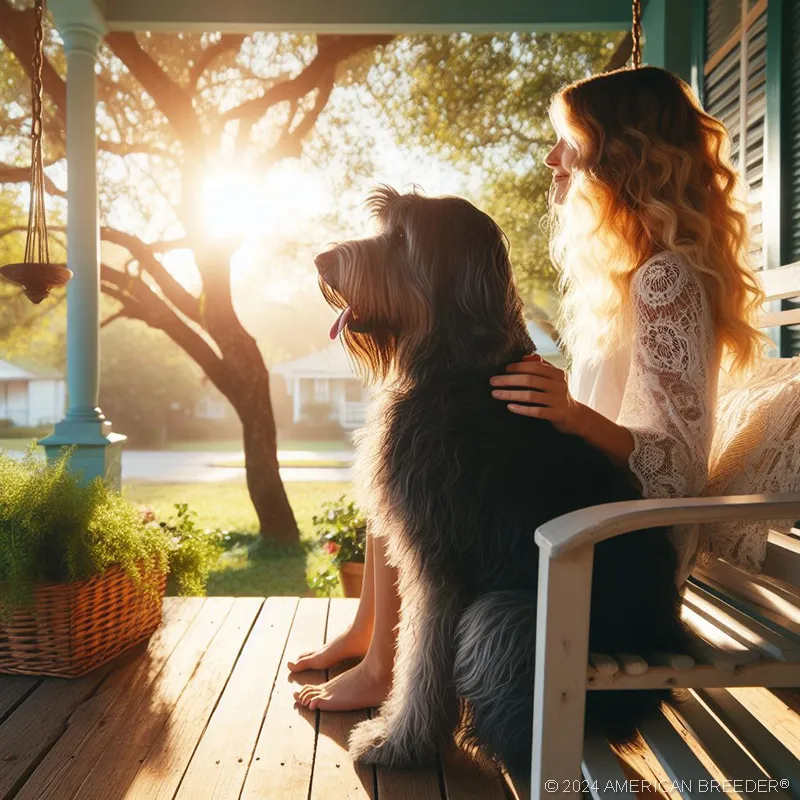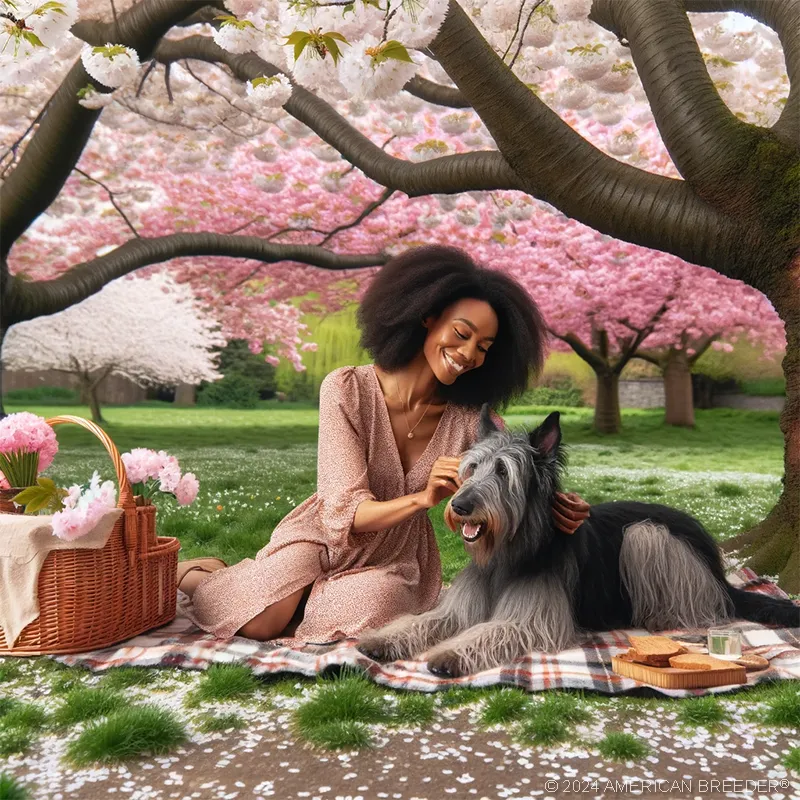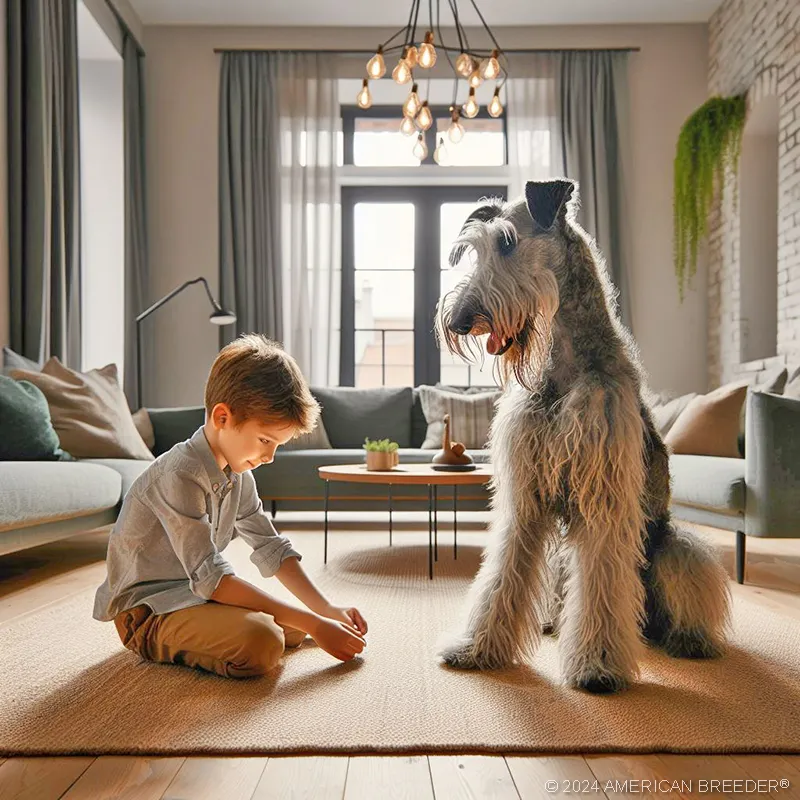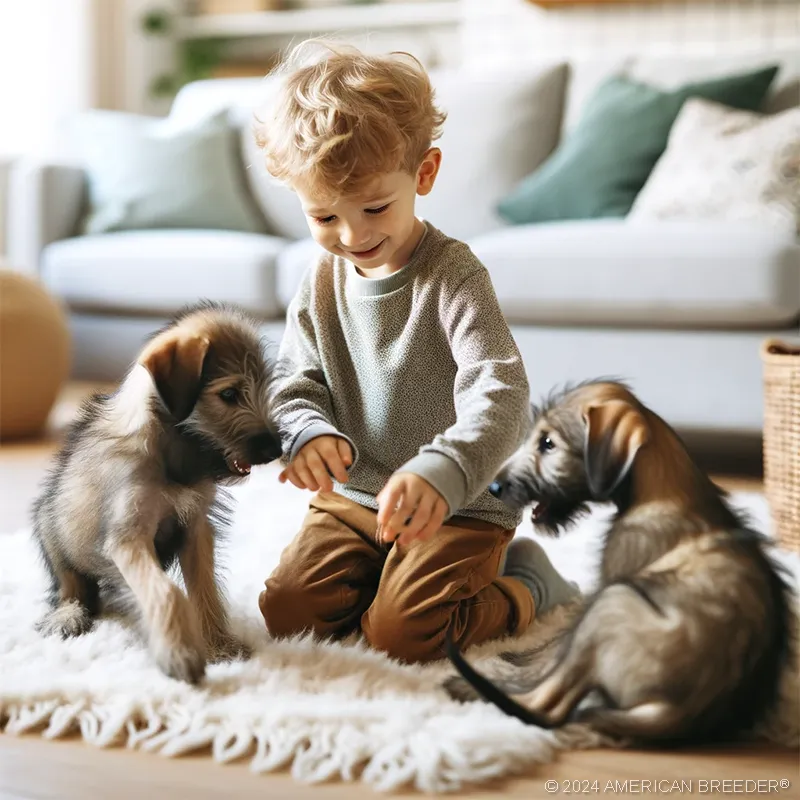The Charms of the Scottish Deerhound
Introduction and Breed Background:
 Step into a world of elegance and grace, where the Scottish Deerhound Dog reigns supreme. With their towering presence and endearing nature, these majestic hounds have captured the hearts of many dog enthusiasts. Before embarking on this extraordinary journey of companionship, let us delve into the rich history and unique qualities of the Scottish Deerhound. Are you ready to be enchanted by the magic of these gentle giants?
Step into a world of elegance and grace, where the Scottish Deerhound Dog reigns supreme. With their towering presence and endearing nature, these majestic hounds have captured the hearts of many dog enthusiasts. Before embarking on this extraordinary journey of companionship, let us delve into the rich history and unique qualities of the Scottish Deerhound. Are you ready to be enchanted by the magic of these gentle giants?
Considerations Before Choosing the Scottish Deerhound:
Welcoming a Scottish Deerhound into your home is a decision that warrants thoughtful consideration. These regal canines require space to stretch their legs and an owner who can dedicate time to their exercise needs. They thrive in loving and active families, eager to join in adventures and offer boundless affection. With proper care and understanding, these gentle giants can be an irreplaceable addition to your life.
Interesting and Fun Facts:
The Scottish Deerhound has earned various monikers over the years, including the "Royal Dog of Scotland" and the "Gentle Giant." In ancient times, owning a Scottish Deerhound was a privilege reserved solely for Scottish nobility. Their affinity for chasing game led to their involvement in the famous sport of deer coursing. With such a remarkable history, it's no wonder these dogs carry an air of dignified nobility wherever they go.
Breed Background and History:
The Scottish Deerhound's origins trace back to the misty highlands of Scotland, where they were revered as hunters of majestic deer. These noble dogs, once owned exclusively by kings and chieftains, enjoyed a privileged existence. The thrill of the chase coursed through their veins as they pursued game with astounding speed and agility.
 Throughout history, the Scottish Deerhound's journey transcended hunting grounds, with its regal allure making appearances in art and literature. This breed's presence became synonymous with nobility and grace, and their popularity grew beyond Scottish borders. Today, these hounds continue to impress with their elegance, winning hearts as cherished companions and valued show dogs.
Throughout history, the Scottish Deerhound's journey transcended hunting grounds, with its regal allure making appearances in art and literature. This breed's presence became synonymous with nobility and grace, and their popularity grew beyond Scottish borders. Today, these hounds continue to impress with their elegance, winning hearts as cherished companions and valued show dogs.
Kennel Club Classification:
The Scottish Deerhound finds its rightful place within the Hound Group in various kennel clubs worldwide. The American Kennel Club (AKC), The Kennel Club (UK), and the Canadian Kennel Club (CKC) have all recognized this majestic breed for its exceptional qualities and historical significance.
Appearance:
Prepare to be captivated by the Scottish Deerhound's commanding appearance. Towering at heights of up to 32 inches and weighing between 75 to 110 pounds, they exude an aura of noble grandeur. With a gracefully arched neck, powerful limbs, and a deep chest, these hounds possess both strength and elegance.
Their wiry and coarse coat comes in a range of striking colors, from mesmerizing brindle patterns to captivating shades of blue-gray, gray, and fawn. A unique feature of the Scottish Deerhound is the distinctive, long tail that gently curves in a graceful arch.
Within their striking appearance lies the key to their exceptional hunting prowess—their keen eyesight and phenomenal speed. Watching a Scottish Deerhound in action is like witnessing poetry in motion, as they sprint across fields with seemingly effortless grace.
Average Litter Size:
When these gentle giants decide to become parents, they usually produce litters of around six to nine puppies. Welcoming a Scottish Deerhound litter is a joyous occasion, and watching the puppies grow is a heartwarming experience.
Temperament and Personality:
 The Scottish Deerhound's gentle demeanor and unwavering loyalty make them cherished family members. Their affectionate nature extends not only to their human families but also to other pets. They approach strangers with a reserved yet polite disposition, reflecting their noble roots.
The Scottish Deerhound's gentle demeanor and unwavering loyalty make them cherished family members. Their affectionate nature extends not only to their human families but also to other pets. They approach strangers with a reserved yet polite disposition, reflecting their noble roots.
While they possess an underlying sense of independence, these gentle giants are eager to please their owners. They thrive in homes that offer them love, attention, and ample opportunities for socialization. Their moderate energy levels make them well-suited for families with varied lifestyles, and they adapt beautifully to both city and countryside living.
Typical Behavior Issues:
Though generally well-mannered, Scottish Deerhounds, like any breed, may exhibit certain behavior issues if not appropriately addressed. Preemptive training and socialization can help prevent any potential challenges. Owners should focus on discouraging any aggressive tendencies, excessive barking, digging, separation anxiety, resource guarding, and fear or phobias.
Trainability and Intelligence:
Training a Scottish Deerhound requires a gentle and patient approach, given their independent streak. These highly intelligent dogs enjoy mental stimulation and respond best to positive reinforcement methods. Early socialization is key to shaping their calm and well-behaved temperament.
Their remarkable intelligence enables them to excel in various activities. From agility training, which puts their nimbleness to the test, to scent work that harnesses their keen sense of smell, Scottish Deerhounds prove to be versatile and accomplished learners.
Practical Considerations:
 Welcoming a Scottish Deerhound into your home comes with practical considerations to ensure their well-being and happiness. As majestic as they are, they require ample space for sleeping and moving around. Additionally, annual veterinary costs, grooming expenses, and regular exercise needs should all be taken into account when planning to bring a Scottish Deerhound into your family.
Welcoming a Scottish Deerhound into your home comes with practical considerations to ensure their well-being and happiness. As majestic as they are, they require ample space for sleeping and moving around. Additionally, annual veterinary costs, grooming expenses, and regular exercise needs should all be taken into account when planning to bring a Scottish Deerhound into your family.
Health and Care:
Scottish Deerhounds are generally healthy dogs, but like all breeds, they may be predisposed to certain health issues. Dilated cardiomyopathy and bone cancer are among the potential concerns, highlighting the importance of regular veterinary check-ups and a balanced diet.
Grooming the Scottish Deerhound is relatively easy, with occasional brushing sufficient to maintain their handsome appearance. Regular exercise is vital to keeping these dogs content and healthy, as they need both physical and mental stimulation to thrive.
Socialization and Compatibility:
The Scottish Deerhound's friendly and gentle nature makes them fantastic companions for children and other pets. Early socialization with a variety of people, animals, and environments will help these dogs grow into well-adjusted and confident individuals.
For multi-dog households, proper introductions and patience are key to ensuring a harmonious dynamic among canine companions. Their natural affability makes integrating them into an existing pack a relatively smooth process.
Living Arrangements and Environment:
 The Scottish Deerhound's large size and activity level necessitate living arrangements that provide them with ample space to roam and play. They adapt well to various environments, be it an apartment in the city or a house with a spacious yard in the countryside.
The Scottish Deerhound's large size and activity level necessitate living arrangements that provide them with ample space to roam and play. They adapt well to various environments, be it an apartment in the city or a house with a spacious yard in the countryside.
Potential owners should consider factors like climate and nearby amenities when determining the ideal living environment for their Scottish Deerhound.
Training and Obedience:
Training a Scottish Deerhound can be a rewarding experience for both the owner and the dog. Basic obedience training lays the foundation for a well-behaved companion. As these hounds are intelligent and quick learners, more advanced training and specialized activities, such as agility, flyball, or canine obedience trials, can further stimulate their agile minds and bodies.
Financial Planning:
Owning a Scottish Deerhound is a rewarding investment, both emotionally and financially. Reputable breeders may offer these majestic dogs at varying prices, typically ranging from $1,500 to $3,000. Initial expenses such as vaccinations, spaying/neutering, microchipping, and essential supplies should also be factored into the budget.
Annual costs, including high-quality food, grooming, regular vet visits, training, toys, and other supplies, should also be considered in your financial planning.
Summary:
 As we reach the end of this magical journey through the world of Scottish Deerhound Dogs, we hope you've been captivated by their noble history, enchanting appearance, and affectionate personality. The Scottish Deerhound's gentle nature and keen intelligence make them well-suited for various lifestyles, whether in a bustling city or a serene countryside setting.
As we reach the end of this magical journey through the world of Scottish Deerhound Dogs, we hope you've been captivated by their noble history, enchanting appearance, and affectionate personality. The Scottish Deerhound's gentle nature and keen intelligence make them well-suited for various lifestyles, whether in a bustling city or a serene countryside setting.
With proper care, training, and socialization, these majestic hounds can thrive as beloved family members, bringing joy and endless love to your life. Embrace the magic of the Scottish Deerhound, and embark on a lifelong adventure filled with cherished memories and unforgettable moments.
Conclusion:
Congratulations! You are now equipped with a treasure trove of knowledge about Scottish Deerhound Dogs. As you continue your journey towards pet ownership, remember that responsible ownership, commitment, and unconditional love are the cornerstones of building a deep and lasting bond with your furry companion.
We encourage you to seek expert guidance, join communities of fellow dog lovers, and continue learning about this remarkable breed. Embrace the excitement of welcoming a Scottish Deerhound into your life, and may your hearts be filled with joy as you share your days with this magnificent and gentle giant!
Scottish Deerhound Dog Quick Reference Guide:
Breed Background: Origin: Scotland | Breed Purpose: Hunting large game, specifically deer | AKC Class: Hound Group | Year Recognized by AKC: 1886
 Appearance: Size: Large | Weight: 75-110 lbs | Coat Type: Coarse and harsh | Colors & Patterns: Brindle, blue-gray, gray, fawn | Distinctive Features: Long and slender body, deep chest, wiry coat
Appearance: Size: Large | Weight: 75-110 lbs | Coat Type: Coarse and harsh | Colors & Patterns: Brindle, blue-gray, gray, fawn | Distinctive Features: Long and slender body, deep chest, wiry coat
Temperament: Energy Level: 3/5 | Friendliness to Pets: 4/5 | Friendliness to Strangers: 4/5 | Trainability: 3/5 | Playfulness: 3/5 | Frequent Barker: 2/5 | Chase Instincts: 5/5 | Sense of Smell: 5/5 | Drive to Hunt: 5/5
Health & Care: Health Issues: Dilated Cardiomyopathy, bloat, bone cancer | Lifespan: 8-11 years | Grooming Difficulty: Low | Exercise Needs: Moderate to High
Socialization: Interaction with Children: Gentle and tolerant | Interaction with Pets: Generally good with other dogs | Interaction with Strangers: Reserved but polite | Ease of Training: Moderate
Suitable Living Arrangements: Apartment: No | House: Yes | Rural Area: Yes | Yard Size Requirements: Large yard preferred
Training & Obedience: Trainability: 3/5 | Intelligence: 3/5 | Obedience: 3/5 | Problem-Solving: 2/5 | Easily Stimulated: 3/5 | Focus Level: 3/5 | Easily Distracted: 2/5
Financial Planning: Typical Price Range: $1,500 - $3,000 | Initial Expenses: Vaccinations, microchipping, crate | Ongoing Annual Expenses: Food, vet visits, grooming
Breeding:
Reproductive Maturity: 18-24 months | Litter Frequency: Once a year | Litter Size: 6-9 puppies | Stud Cost: $1,000 - $2,500 | Breeding Challenges: Whelping can be difficult
Did You Enjoy this Article? Share it and Help Us Spread the Word!
If you found this article helpful, we'd appreciate it if you could share it with your friends or link to it from your website, blog, or group! You can also use the convenient social share tabs on the left side of the screen to instantly share this page to your social media feed. For more ways to support and promote the American Breeder Community, visit our Share & Promote Together page for social media posts and memes you can copy and share. Your support means the world to us!
Disclaimer: The information provided in this article is for general informational purposes only and does not constitute legal, medical, financial, or professional advice. While we strive for accuracy, we make no representations or warranties regarding the completeness, accuracy, reliability, or suitability of the information. Please consult with a professional before making decisions based on the content provided. American Breeder Inc. assumes no responsibility for any errors or omissions or for the results obtained from the use of this information.
